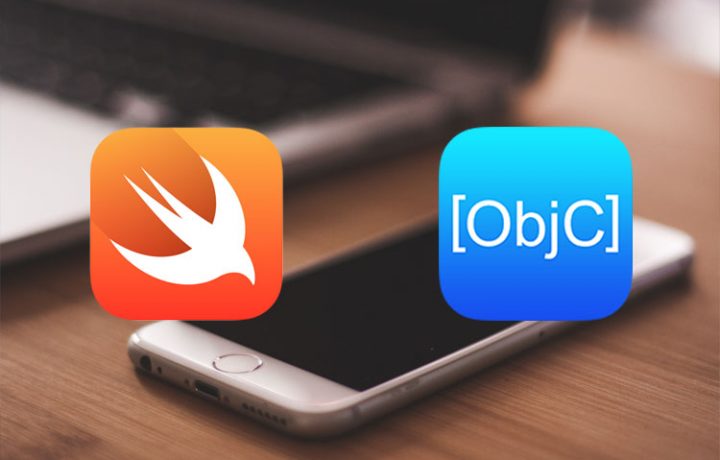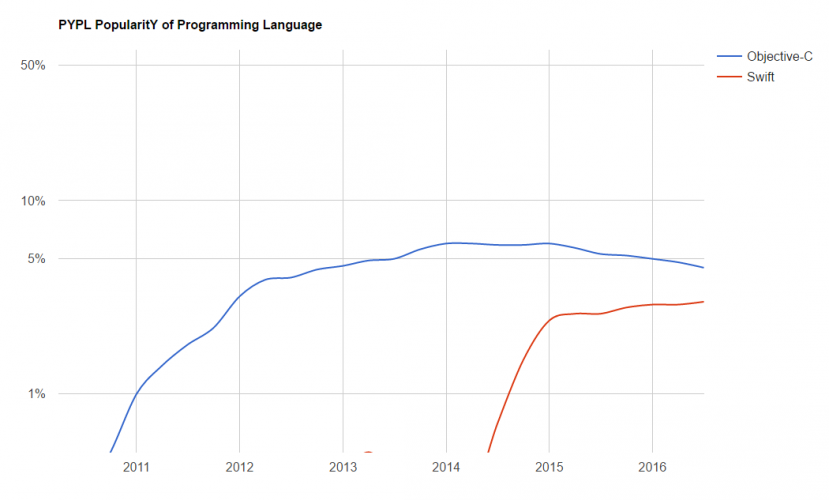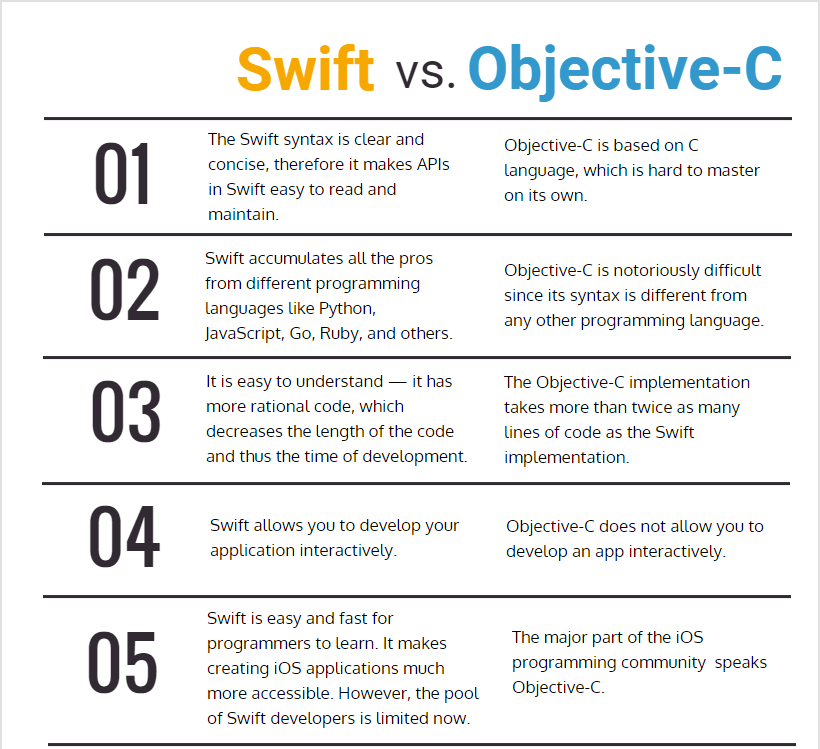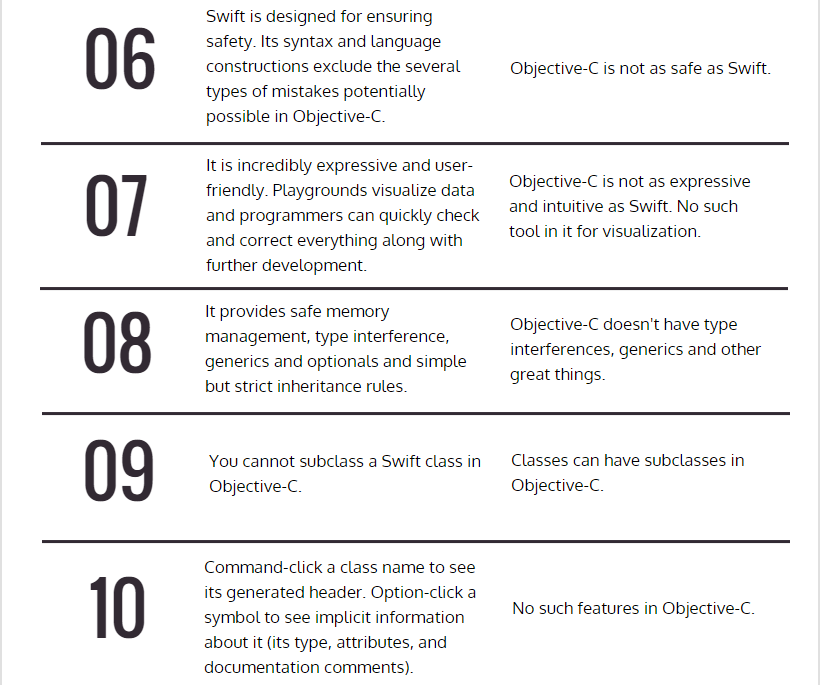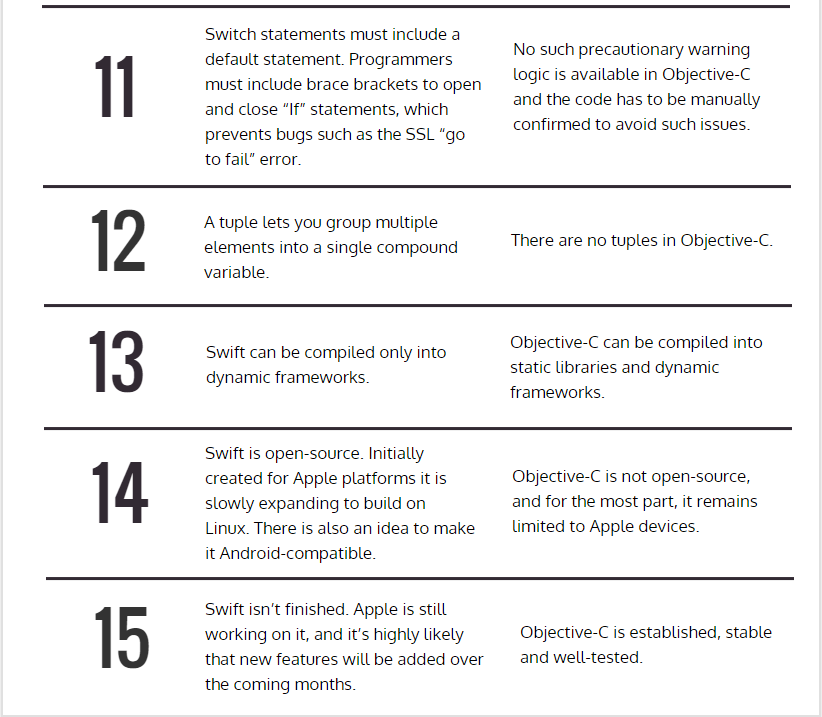Let's build <span class="uk-text-primary">a great <br class="uk-visible uk-hidden@s">product</span>
There are a lot of factors to consider every time you start a new project. You may have already faced the dilemma of choosing Swift vs. Objective C for your iOS application. We’ve been there and decided to tackle this topic.
Curious about MindK? Click here to learn more
Let’s start this Swift vs. Objective-С comparison with a short analysis of facts. Swift programming language from Apple was released in June 2014. Before its release, Objective-C had been widely used to develop apps for OS X & iOS. However, by the end of 2014 over 2400 projects at GitHub, one of the most popular IT projects platforms, switched to Swift. Nowadays, the popularity of this new iOS app programming language is growing at a very fast pace.
Take a look at the graph provided by PYPL and created by analyzing how often iOS programming language tutorials are searched on Google.
Hundreds of thousands of developers create applications for iPhone and iPad using Objective-C. And due to the immense popularity of the platform, they will certainly continue to develop them in the future.
If we compare Swift vs. Objective C, it should be noted that Swift contains significant improvements. It means that a large community of developers around the world will start to learn this new language.
One of the key advantages of Swift lies in the fact that it can be used even by an average programmer to develop simple mobile applications. Using such a simple tool as Playgrounds, any developer will be able to easily explore this object-oriented programming language.
But what language should you choose for building new iOS applications? And what are the main Objective-C vs. Swift differences to be aware of?
Swift vs. Objective-C side-by-side comparison
What Should Developers Take Away
Let’s consider some Swift functions that make app development more interactive and approachable a bit closer.
1. Better switch.
Unlike in C and Objective-C, in Swift, switch can be implemented to all new features such as ranges, tuples, values, lists of values, wildcards, as well as lines, classes, and structures. It doesn’t “fall through” by default.
In this regard, Objective-C code turns out to be more complicated and less readable. Moreover, in Objective-C, it is necessary to create a separate new structure for some Point variable. On the contrary, Swift simplifies the whole procedure significantly.
2. Functional friendly.
Another advantage lies in the fact that Swift has more simplified syntax in terms of creating fields and properties of the classes. In Swift, properties do not require instance variables anymore. As for Objective-C, in its latest versions, these instance variables were created automatically but they could be set manually.
In Swift, now they can not be created. Thus, you shouldn’t remember and think about them anymore.
3. Interactive playgrounds.
This is a really great feature if you are fond of experiments. The latest Xcode IDE gives developers a large space for experimentation.
It looks like a simple editor where you can code. This code can be compiled and executed at once. There is no need to build a project and run the emulator to check everything. You just code and see the results.
In other words, you can check everything you need without wasting your time. A special panel on the right can show you anything you need: from simple lines and images to the final view of any control unit. It is really nice and convenient.
Creation of this panel was inspired by Bret Victor, the Apple awards winning designer, and his interactive software system called Light Table.
Moreover, in Swift, you can easily experiment with new algorithms on the fly using REPL, a great interactive environment.
4. Better enum.
In Swift, enum value can be lines, characters, integers and fractional numbers. Thus, with Swift, you get more readable and less lengthy code implementing the inverse transformation #toRaw. You can’t do this in Objective-C.
5. New features of functional programming.
In Swift, there are higher-order functions, functions as values, nested functions, closures, anonymous functions and other attributes of real functional programming.
On the other hand, in Objective-C, you need to use blocks instead. That’s why Objective-C code turns out to be 4 times lengthy and it is not as clear as in Swift.
Why the Future Favors Swift
Despite all the advantages of Swift over Objective-C, some developers may say that this language is raw and there are some problems with the Xcode connected with autocompletion.
However, Swift – is not just the programming language. It closely interacts with other tools that allow developers to create their own software. These tools include not only the development of the built-in environment but also a debugger that identifies all code errors. Almost every Apple developer is familiar with most of them.
All in all, Apple engineers have created an easy transition for the dozens of thousands of developers who build apps for iPhone, iPad and Mac. Swift creators continue improving the language and show all possible intentions to turn it into a giant.
Mike Ash, the Apple engineer, who has been engaged in software development for the company for the last 17 years, claims:
It takes time and efforts to learn a new language. Swift doesn’t appear to be more attractive than other languages such as C#, Ruby or Python. At the same time, taking into account Swift advantages and disadvantages it turns out to be more user-friendly and contemporary than Objective-C, which has its roots in the mid-80s.
Another great thing is interoperability of Swift with Objective-C, therefore any decent Objective-C developer can easily understand the nuances of Swift.
Concluding Note
To put it in a nutshell, Swift can be considered as iOS coding language of the future.
Of course, a better understanding comes through time. It is quite risky and expensive for companies with running solutions to migrate from Objective-C to Swift. But if to think of fresh projects Swift should definitely be a better choice.
As for MindK, we are going to develop all the brand new apps using Swift. It is good to have something which is productive and well-known as a development tool but the search for better ways to develop mobile apps never cease for our team. We look forward to seeing how Swift changes in the nearest future and are inspired to employ more of the language in our applications.
Curious about MindK? Click here to learn more
If you find this Swift vs. Objective C article useful, let us know about your thoughts.
